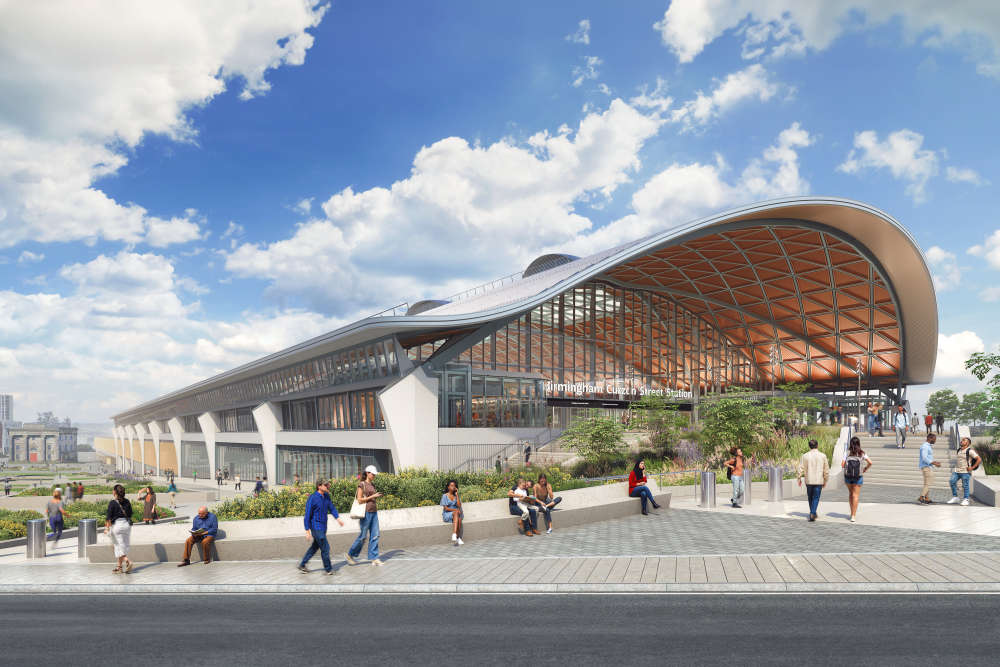
Repairs could soon be carried out on the old Curzon Street Station building in Birmingham as works on the new HS2 city centre terminus continue.
The revised design of Birmingham’s new high speed railway station, which is set to become a key destination on the divisive HS2 line, was approved earlier this year in May.
Construction work on the new Curzon Street Station first got under way back in January 2024 amid hope it would help drive a huge economic boost for the city in the coming years.
As the station takes shape in the city centre, HS2 has now provided an update on the old station building nearby – but it still remains unclear what its future use could entail.
Opened back in 1838, the station was the first direct railway line linking Birmingham to London and has been described as one of the world’s oldest surviving pieces of monumental railway architecture.
Plans were recently lodged for a number of works on the old station, including ‘remedial repairs’ to the external walls, repairs to external windows and doors, and the installation of new lightning conductor.
There are also proposals for ‘internal works’ which would involve the installation of a fire door, emergency lighting system and fire alarm system.
A HS2 spokesperson said on Monday, July 28 that a planning application was put forward for a “package of external remedial repairs” to the old Curzon Street Station.
“The works are required to safeguard the Grade I Listed heritage building and we have been working with officers at Birmingham City Council (BCC) and Historic England on the proposals,” they continued.
“Subject to approvals, repair work will be carried out on the external parapets and stonework including repointing and regrouting, along with replacing the roof.”
They did not comment on what the old station could be used for in the future but a HS2 spokesperson said last year: “We believe it’s fitting to integrate the old with the new to reflect the evolution of railway infrastructure in the city.
“We are working with Birmingham City Council and other partners to identify a strategy to complete the work required to restore this iconic landmark for future use.”
‘Can we get on with this?’
The proposals for the new Curzon Street Station will help to “future proof” the station, those behind the plans previously said.
They included a change in material from timber to aluminium within the station roof due to recently tightened fire standards while the eastern concourse has also been replanned.
The plans were considered at a council planning meeting in May this year where councillor Gareth Moore said he supported the application but expressed frustration at the progress made so far.
“HS2 offers tremendous benefits to Birmingham which we, as a city, should very much welcome,” he said. “To unlock those benefits, we need a station so this application is crucial.”
He continued: “I suppose my only key ask is can we get on with this?
“We need the station and it’s pretty damning that more progress has been made with that infamous bat shed than the actual station that’s needed.”
Councillor Lee Marsham, chair of the planning committee, said he thought HS2 was of “great importance” to the city and could be a key part of the tram extension to the proposed new stadium and sports quarter for Birmingham City FC.
A council officer’s report, published ahead of the meeting, added that the revised design of the proposed station building “would still be a world class 21st century landmark building”.
It went on to say it would contribute to “maximising the regeneration and development potential” of HS2 in the city centre.
But despite progress being made on the design of Curzon Street, the CEO of HS2 Ltd confirmed earlier this year that a “reset of the programme” was needed amid “serious challenges” plaguing the project.
This ‘reset’ involves a review of the project’s cost and schedule.
“This is of a scale never done before – the last mainline terminus we built was 1899 in Marylebone,” CEO Mark Wild said this year.
“Truth is also the construction has been harder than we would have thought so we’ve lost ground in construction.
“So a combination of factors of getting a little bit behind and also the complexity to come means we need to reset the programme.
“I hope people are patient – it’s the only time we’ll do it [a programme reset] from now until the end of the job.”
Mr Wild added: “Two things are happening in parallel – peak production and at the same time, parallel to the reset.
“It’s not like we’re sitting on our laurels.”